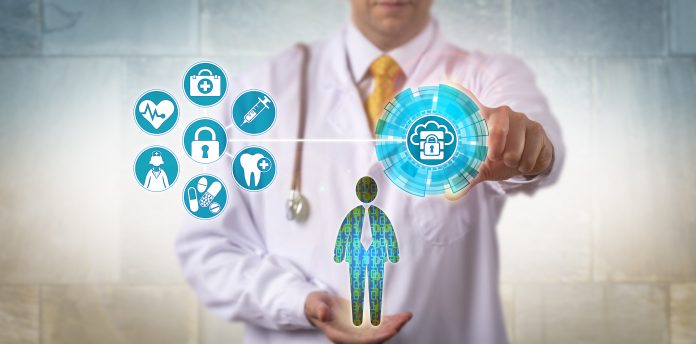Cleveland Henry, Director of Cloud at UKCloud discusses the topic of properly handling and storing patient data using cloud innovation, here
The healthcare industry is one of the most challenging to transform thanks to a number of facets including but not limited to the significant reliance on a large number of legacy systems which are often combined with highly sensitive, personalised information. Unfortunately, the NHS has been subject to much cynicism over the past few years, despite continuous efforts to fully digitise the public service and invest more in UK healthtech start-ups.
It’s unsurprising, then, that NHS Digital exercises caution with regard to procurement of these shiny new technologies. Since as far back as 2005, the service has been heavily criticised on its delivery and investment in schemes like the NHS National Programme for IT (NPfIT, subsequently re-christened Connecting for Health), which have been described as ‘massively ambitious’ and the delivery failure highly publicised in 2011. There is an incredible amount of pressure placed on stakeholders in these kinds of digital transformation projects — both the department of health and the service providers hauled in to support the IT project have felt the sting of the failure.
Not only this but, by 2013, The Guardian journalist, Rajeev Syal, reported the total bill for the unsuccessful project to be around £10bn of taxpayers’ money. The eye-watering invoice has since been attributed to an integral failure in the government’s ability to construct and manage large contracts such as these — and in the wake of the disaster, further funds were needed to bolster the replacement regional schemes. The legacy IT systems they chose were often unable to communicate with each other, as they are comprised of differing systems storing information in local data centres — a far cry from the current cloud technologies available today.
The problem with what we’ve seen in subsequent years is that local health trusts and GPs were encouraged to develop and buy individual computer systems to suit their needs, in a bid to align with the expectations of public spending watchdogs. In theory, this would allow for bespoke and strategic procurement of tech where the ‘one-size-fits-all’ approach fell down. However, in practice, what we’ve witnessed is a dismantling of uniformity and connectivity, which the health sector desperately requires. Without nationwide, cloud-based connectivity, patient data remains in siloes — exactly what the original IT project was hoping to erase.
Getting heads in the cloud
Now, citizens are taking matters into their own hands. From humble fitness apps to full-on bio-hacking, people are coming together via tech platforms to share not only their own health experiences but also their data. This suggests that there’s a strong appetite for digital services to be widely available for patients, particularly in areas like GP consultations. Companies like Babylon, Kry and Livi have made an appearance in recent years providing such services by using cloud-native technology — but it’s quite frustrating that the developments are this recent when you consider that basic video telecommunication has been readily available for at least the past 15 years (think: Skype).
People have already been submitting all kinds of personal data into cloud-native health apps, even in the simplest of forms. Step-counters, apps for exercise and training such as My FitnessPal, and Sleep Cycle (which is intended to measure and advise on sleep patterns) — all of these have been circulating for the past few years outside of public health organisations. Similarly, this autonomous thinking has led to trends like biohacking, which encompasses physical and mental health experimentation in the pursuit of understanding how to fully optimise your body and overall health. An example of this is the study of nutrigenomics, which involves nutritionally manipulating the activity of your body — cutting out sugar, elimination diets, intermittent fasting. Search these terms in YouTube and you’ll be confronted with all kinds of health influencers endorsing these methods.
Prescribed treatment: digital transformation
With this in mind, it’s clear that as people-powered health rises, so will patient data. This could prove a bonus for the NHS, as patient data can subsequently be combined with clinical data, resulting in a much more informed and tailored health service. However, storing this data appropriately will be of utmost importance to ensure its ready availability. Such sensitive data can’t afford to be compromised.
Retrospective criticism and previous disappointments simply can’t continue and shouldn’t corrupt our vision of an integrated and fully digital health service. Much has happened in the past few years, mainly innovation in private sector technologies — thanks to hyperscalers like Apple and Microsoft — and a cultural shift towards the adoption of cloud technology has seamlessly tied in with this. We’re no longer in a position to tolerate the limitation of public services with legacy software, as an ever-increasing national shortage of doctors and resources continues to remind us.
Remedy: Healthtech startup collaboration
There’s no doubt that Babylon and Kry-style services will be a key component of the future NHS delivery mode, enabling developers to enter and evolve the healthcare services it provides. Still, the Government must be careful about endorsing any specific product — and technology can’t solve everything. At the very least, guidelines and standards should be in place for these partnerships, especially with the vast amounts of patient data that it holds.
So long as this data is properly managed and stored, start-ups and scale-ups should be trusted to help drive digital transformation. To achieve this, a complete cloud-focused culture shift must take place within the NHS. This will create and promote knowledgeable communities of experts working together, helping to save more human lives. Let’s not forget, the NHS broke new ground 70 years ago, has continued to do so throughout the years and so it has every potential to break new ground again.











